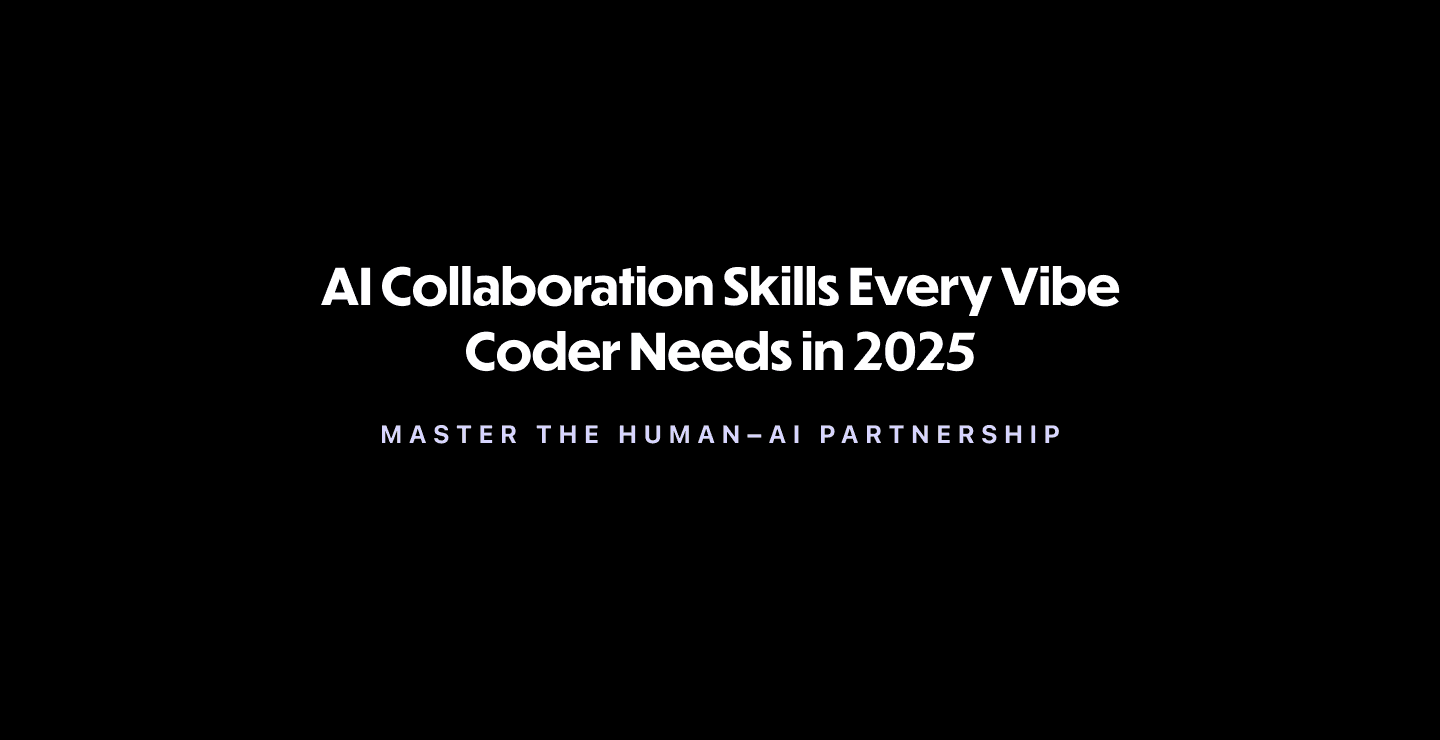AI isn’t just a buzzword or incoming trend anymore. It’s an everyday part of how apps, websites, and tools get built. Developers and non-developers alike are learning that the key to success is not just coding, but knowing how to collaborate with AI effectively. These skills are quickly becoming essential for the future of work.
Why AI Collaboration Matters
AI coding assistants can draft code snippets, explain logic, and help fix errors. However, without clear communication and iterative guidance, AI can miss the mark. That’s why knowing how to direct, refine, and critically evaluate AI-generated outputs is just as important as traditional technical knowledge.
For those currently in tech or transitioning careers, mastering every programming language is unnecessary. Instead, learning how to guide AI tools to bring your ideas to life efficiently is the key.
Essential AI Collaboration Skills for Vibe Coders
Vibe coding transforms software creation into a collaboration with AI assistants, requiring a distinct skill set that goes beyond traditional programming. Master these foundational skills to guide AI effectively, build faster, and maintain creative control.
1. Natural-Language Prompting
Translate your ideas clearly and precisely into natural language commands that AI can understand and execute accurately. Strong prompting reduces AI hallucinations and accelerates project progress by minimizing back-and-forth corrections. Using structured prompt frameworks, like the CARE model (Context, Action, Requirements, Examples), helps clarify expectations.
2. Iterative Refinement and Feedback
AI outputs are rarely perfect initially. Successful vibe coders engage in a conversational loop, reviewing, giving additional context, and refining AI-generated code gradually. This flow maintains momentum and enhances the final product’s quality.
3. AI-Powered Debugging Collaboration
Partner with AI to interpret errors and obtain suggested fixes in natural language, transforming debugging from frustrating blockages into teachable moments. This skill makes problem-solving accessible even without advanced coding knowledge.
4. Critical Quality Control
Not all AI-generated code meets expected standards for correctness, security, or maintainability. Vibe coders must carefully review, test, and refine outputs, applying judgment to balance AI speed with dependable results.
5. Adaptability to Evolving AI Tools
With rapidly advancing AI coding platforms, from Replit and Cursor to GitHub Copilot, being flexible and eager to learn new interfaces and capabilities ensures vibe coders remain efficient and competitive.
6. High-Level Problem and System Framing
Effective vibe coding requires framing the problem or feature clearly at a system level, enabling AI to generate coherent and scalable application components rather than isolated snippets.
7. Ethical Awareness and Security Mindset
Understanding ethical AI use, mitigating bias, ensuring privacy, and securing code remain vital responsibilities. Vibe coders need awareness and skills to vet AI outputs for compliance and safety.
8. Integration into Collaborative, Multi-Disciplinary Teams
Vibe coding frequently happens within teams combining human and AI efforts. Skills include communicating AI capabilities clearly, coordinating workflows with teammates, and integrating AI output into DevOps or CI/CD pipelines.
9. Continuous AI Learning and Experimentation
The field changes fast. Vibe coders adopt a mindset of ongoing discovery, experimenting with AI enhancements, learning from failures, and regularly updating their approaches to maintain peak performance.
10. Minimalist Goal Setting and Boundary Awareness
Balancing freestyle creativity with clear, minimalist goals helps prevent drift and technical debt. Knowing when to “go with the flow” and when to impose structure ensures vibe sessions remain productive and manageable.
Real-World Applications
Business Development Prototypes
Professionals use AI to quickly generate app prototypes supporting pitches to clients or investors, accelerating idea validation and iteration cycles.
Student Coding Support
Students leverage AI to understand complex coding logic and scaffold projects, enhancing their programming education through interactive collaboration with assistants
Meeting Preparation Automation
Automations check calendars and gather necessary documents ahead of meetings, demonstrating how AI collaboration can boost productivity and preparation.
These examples show how collaboration skills apply across industries, not just in traditional developer jobs.
Why This Matters for Career Growth
Employers in 2025 want team members who can learn quickly, work with AI tools, and adapt to new workflows. Building AI collaboration skills through vibe coding helps you stand out, even if you’re just starting your journey into tech.
Ready to Build These Skills?
To get started, read Beginner’s Guide to Prompting for Coding Tasks for hands-on strategies, or explore 5 Ways AI Tools Can Boost Your Coding Skills to learn the benefits of collaboration in action.
Curious About Vibe Coding? Start Here.
Campus’ Vibe Coding 101 course is taught live online and built to get you hands-on fast — no coding background required. The curriculum is built for non-technical folks, from product managers to marketers to data analysts, who want to add coding and AI to their toolkit.
You’ll meet once a week, learning to code in Python and Replit. Along the way, you’ll build four working apps, a personal landing page and a standout project you can showcase with confidence.
Classes start soon. Check it out.
FAQ
What are AI collaboration skills in simple terms?
They’re the habits and techniques that help you guide and refine what AI tools create.
Do I need to be a developer to learn these skills?
Not at all. Anyone who wants to build or understand apps can benefit.
How do I practice AI collaboration?
Start with small projects. Write clear prompts, review the results, and iterate until the app works as intended.
Will AI replace the need for these skills?
No. The more AI evolves, the more valuable human guidance and problem-solving become.
Can collaboration skills help outside of coding?
Yes. They apply to business analysis, marketing, data work, and any role where AI tools are used.
